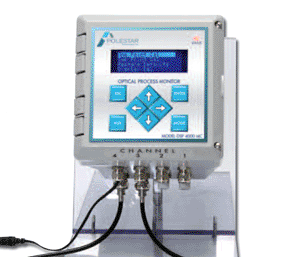Fluorescence-Based Optical Biosensor Measures pH, CO2, and O2
By LabMedica International staff writers
Posted on 19 Sep 2011
A new fluorescence-based optical biosensor measures blood gas parameters. The technology can be applied to the measurement of typical blood gas parameters in tissue engineering, organ perfusion, and general physiology applications.Posted on 19 Sep 2011
These optical biosensors use a controlled optical source that emits light signals at specified frequencies, which excite an ion-specific sensor spot in contact with the test medium. Changes in the parameter of interest are reported as a proportional change in some characteristic (intensity, phase shift, etc.) of the fluorescence.

Image: The Harvard Apparatus Polestar fluorescence-based optical biosensor (Photo courtesy of Harvard Apparatus).
Because they are inherently self-referencing, the detection technology eliminates the potential for measurement error arising from changes in sample properties (i.e., flow rate, viscosity, etc.) This ensures stable, drift-free calibration and hence reliable measurements throughout the lifespan of a sensing element.
The Harvard Apparatus (Holliston, MA, USA) Polestar fluorescence-based biosensor features include completely sterilizable long-life sensors, which do not require electrolytes, provide more accurate measurements than traditional methods, and undergo minimal chemical degradation. The USP Class VI-certified sensors are shipped precalibrated.
Unlike polarographic oxygen electrodes, this technology is non-ion-consumptive. These easy-to-use biosensors are free of the maintenance complications inherent in traditional chemosensing: requiring only cleaning and dry storage, without the need for electrolyte and membrane changes, or prepolarization of the electrode amplifier.
Related Links:
Harvard Apparatus














